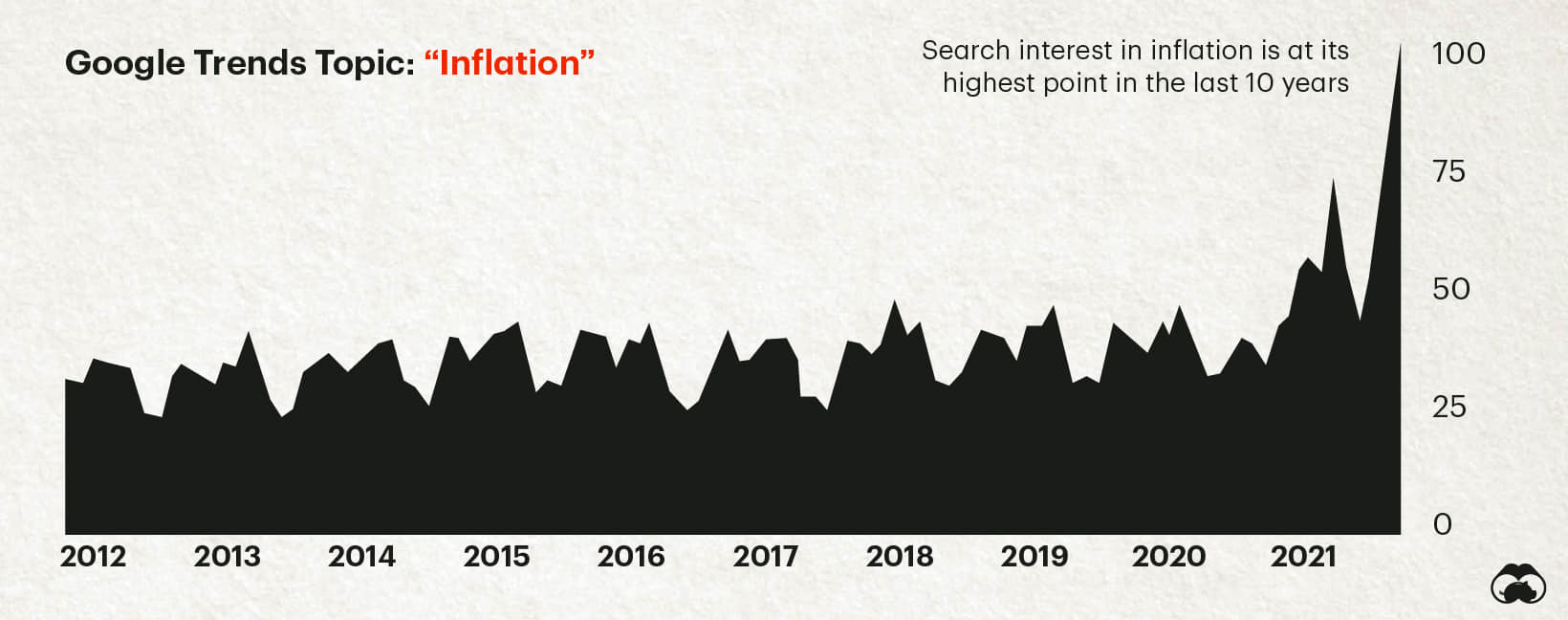
Why no one can agree on what inflation is and how to measure it
Published 13 Nov, 2021
With the highest inflation in 31 years and inflation fears running rampant, there is a renewed interest in inflation metrics, monetary policies, and their influence on the broader economy.
Since January 2021, Google trends showed a 73% increase in searches for the term inflation and 98% for the term hyperinflation, with peaks at the end of October 2021.

In recent months it's also become apparent that inflation is a highly politicized, bipartisan issue used by many factions to further their political and economic agenda. And the opinions on the actual inflation rates varied greatly between investors and economists, verging from Deflation to Hyperinflation, with everything in between. Although the US government leans heavily on the headline inflation reflected by the yearly % change in the CPI (Customer Price Index), many investors and journalists analyze a variety of metrics and different calculation methods.
You may find yourself wondering, can it be this hard to calculate a weighted average of the price of goods? Isn’t there some scientific consensus about what inflation is and how to measure it?
It seems not.
Inflation remains an ongoing source of disagreement between different economic schools.
- Monetarists tie it to the money supply and the Fed's balance sheet and look at those metrics for guidance.
- Austrians and supporters of van Mises agree with Monetarists about the money supply but not the quantitative money theory (QMT) that ties money supply to other factors like money velocity and GDP. Instead, they create their own metrics like the True Money Supply (TMS).
- Keynesians believe inflation is caused by supply and demand, and the related production, and labor. They think governments and central banks should control and influence everything. Unsurprisingly, post-Keynesian economics dominates across the governments and central banks.
- Many in the Treasury and Fed who believe in the Modern Monetary Theory (MMT), claiming that there is no relationship between money 'printing' and inflation whatsoever, which historically has been the main reason for hyperinflation, and continues to be so in Venezuela, Lebanon, and most recently, Turkey.
- Finally, we have the inflation deniers and truthers, most often among the academics, who reject the official metrics and seek independent data to create their own economic models.
And here lies the crux of the problem. The centralized entities seem to have a monopoly on the underlying data, calculations, and reporting and little incentive to share the truth. Quite the opposite, they are benefiting from reporting as low a rate as possible to make the US economy seem strong.
But in the modern age and with online access to all data imaginable, can we, the decentralized generation, not find a technical solution to the made-up problems of the outdated, deep state systems?
We chose to find out and apply our crypto developer approach to the seemingly unsolvable economic problem.
Introducing, Truflation, the first true, on-chain inflation index based on independent data sources and calculations made by crypto developers and investors for crypto developers and the community.
Contact us to learn more about how to incorporate the true inflation rate into your DeFi products.
Article written by Natalia Nowakowska